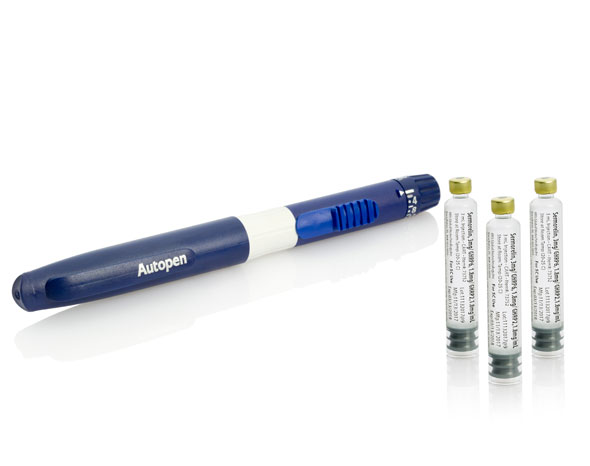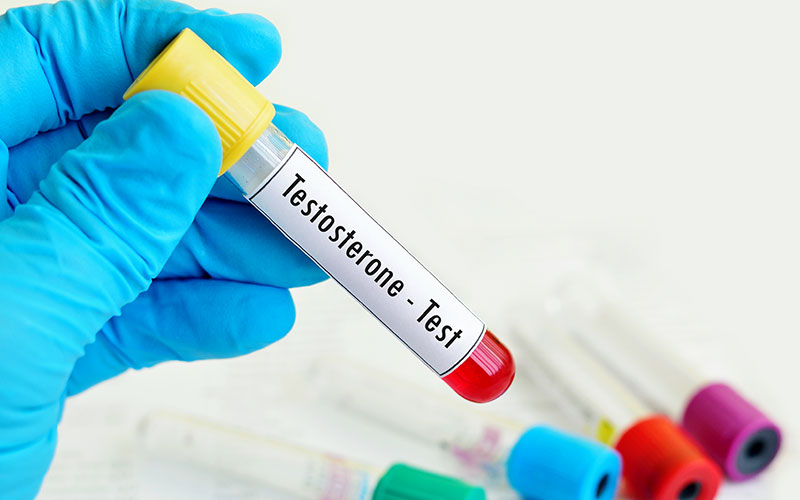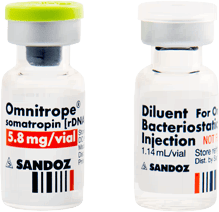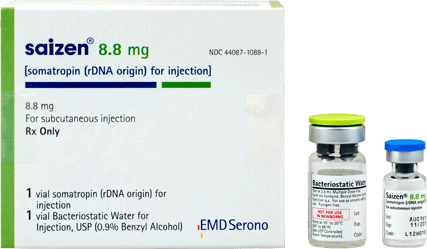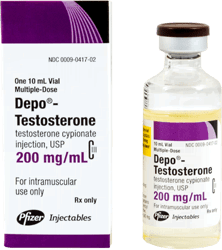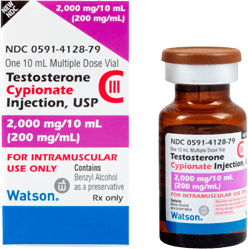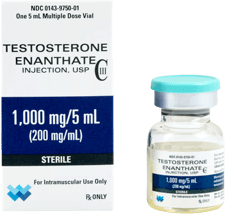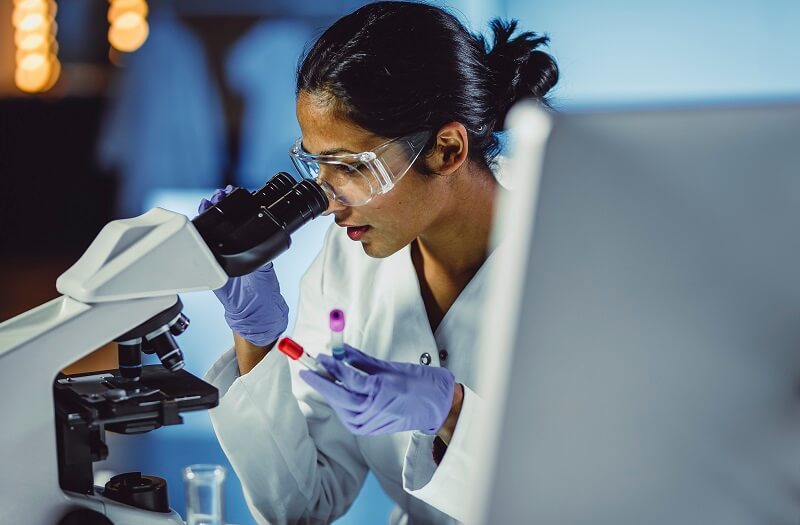- Home
- Growth Hormone
- Growth Hormone
- Growth Hormone Deficiency
- Growth Hormone Therapy
- Growth Hormone Injections
get startedThe Most Effective Hormone Replacement TherapiesUnderstanding Testosterone Levels By Age
Testosterone levels in both men and women change as they age.
The normal testosterone level for men and women does change with age. Any chart of testosterone levels by age will provide the information for men or for women as a range. This is because everyone’s body reacts to their individual level of testosterone differently. Two people of the same age with the exact same level of testosterone could be feeling very differently. What may cause one person to have symptoms of low testosterone could have the other feeling just fine.
What Are Normal or Average Testosterone Levels In Men?
Testosterone production in men starts as early as in the womb. We are all born "female" it is the release of testosterone in a developing fetus with male chromosomes that begins its differentiation into a male. From birth through adolescence, testosterone levels in boys continue to increase. In adolescence, a large surge of testosterone is responsible for the characteristics of “manhood” – development of the sex organs and secondary sexual characteristics such as beard growth, deepening voice, etc.
Testosterone levels in men then peak at around the age of 20. After that, they start a steady decline.
The chart below breaks down the average testosterone levels in men by age:
Age Years Average Free Testosterone pg/mL Average Total Testosterone ng/dL Normal Total Testosterone ng/dL 30 – 40 8.7 to 25.1 219 to 1009 600 to 675 40 – 50 6.8 to 21.5 201 to 993 500 to 550 50 – 60 7.2 to 24.0 170 to 918 400 to 450 60 + 6.6 to 18.1 156 to 700 300 to 350 As you can see, the average testosterone levels in men by age can vary quite a bit. For example, if we take a look at a 45-year-old man, his average testosterone level range can go from 201 ng/dL all the way up to 993 ng/dL. What is considered to be normal is between 500 ng/dL and 550 ng/dL. That leaves everyone at the lower end with a possible concern.
This is why doctors and clinics that provide testosterone replacement therapy aim for an "optimal" testosterone level, not necessarily "normal" on the charts. Our doctors aim for the 550 mark when providing testosterone replacement therapy to men as the ideal average testosterone level.
Another way that clinicians evaluate testosterone level is not by specific age ranges as in the chart above but by using “Tanner Stages.” The following chart illustrates the normal total testosterone levels for men and women by "Tanner Stage" and age. The Tanner Scale breaks down the observable signs of puberty into 5 stages, running from Stage I from about age 10 to Stage V at 15 for boys and about age 8 to 15 for girls.
Tanner Stage Male Female Testosterone (ng/dL) Testosterone (ng/dL) I <3 <3−6 II <3−432 <3−10 III 65−778 <3−24 IV 180−763 <3-27 V 188−882 5−38 Adult Male Adult Female >18 y: 264-916 20 to 49 y: 8−48 >49 y: 3−41 Source: LabCorp
To compare so that you can better understand how variable that “so-called” normal levels of testosterone can be, the following chart gives the “normal” testosterone levels from Quest Diagnostics, another respected testing lab. Quest does not use the Tanner Scale but rather indicates the normal ranges for males and females by age.
1-5 Years ≤5 ≤8 6-7 Years ≤25 ≤20 8-10 Years ≤42 ≤35 11 Years ≤260 ≤40 12-13 Years ≤420 ≤40 14-17.9 Years ≤1000 ≤40 ≥18 Years 250-1100 2-45 Source: Quest Diagnostics
If you compare this chart to the first chart from LabCorp, you can see how the “normal” ranges differ. These two charts come from two of the most respected testing labs in the country, and yet they have differences. That should help you to understand why it is very hard to pinpoint what is the "normal" total testosterone level for any given person of any given age. This is precisely why our doctors try to bring every patient to a "target level" that we have found to be optimal for most patients, regardless of age or gender.
Once we determine what your unique optimal level is, we can tailor treatments that will get you in that zone, so you can perform at your personal best, regardless of your age.
What Are Normal or Average Testosterone Levels In Women?
Women’s bodies make and need testosterone as well. Obviously, men produce a lot more testosterone than women. According to Mayo Clinic Laboratories, for women ages 19 and up, normal testosterone levels range from 8 to 60 ng/dL.
Like men, women’s testosterone levels also decrease with age. However, unlike men who start to lose testosterone gradually over time, a woman’s testosterone plunges more “all at once” when she enters menopause.
Maintaining levels of testosterone within the normal range is critical for a woman’s overall health.
But more than that, testosterone serves some very specific purposes in a woman’s body. It is vitally important in bone health. Proper testosterone levels support a women’s bone strength and bone health and may help prevent age-related bone loss that can lead to osteoporosis. A 2016 study published in the journal, Clinical Interventions in Aging, found that both testosterone and estrogen are essential for bone formation in women.
Testosterone in women has a positive effect on cognitive health. A recent study found that postmenopausal women with Alzheimer’s disease and/or experiencing senior dementia had lower levels of testosterone and estrogen than the control group.
What Are the Benefits of Higher Than Normal Testosterone Levels?
The goal of testosterone replacement therapy is not to try to turn anyone "superhuman" by giving them higher than normal testosterone. Testosterone replacement is designed to bring your levels into the range that is right for your age and your individual optimal health.
Excessively higher than normal testosterone levels can cause any number of health problems. Naturally occurring slightly higher than normal testosterone levels can have some benefits, such as lowering blood pressure, preventing obesity, and reducing your risk of cardiovascular disease.
What Are the Disadvantages Of Having Higher Than Average Testosterone Levels?
Higher than normal testosterone levels are quite rare in adults. In children, higher than normal testosterone levels could lead to early onset of puberty. In both sexes, higher than normal testosterone levels have been linked to infertility.
Generally speaking, high than normal testosterone levels are more of a problem for women than for men. Women with above-average testosterone can develop a condition known as polycystic ovary syndrome (PCOS). It occurs when the ovaries produce too much testosterone. Symptoms of PCOS include:
- Irregular or no periods
- Oily skin
- Acne
- Increased hair growth on the face, back, or chest
It is not clear what causes PCOS, but researchers think it is a combination of genes and the environment.
Understanding How Testosterone Affects Men
Testosterone is one of the most important hormones for men at every age.
Testosterone is an androgen or male sex hormone. Testosterone affects men in several important ways. In men testosterone:
- Regulates sex drive or libido
- Is essential for building and maintaining bone mass
- Regulates how well your body burns fat
- Is essential for muscle mass and strength
- Plays a key role in the production of red blood cells and sperm
- Regulates mood and stimulates cognition
Why Does Your Testosterone Level Drop as You Age?
There can be several causes of low testosterone. There are certain diseases and genetic conditions that can lead to low testosterone. Conditions that can cause low testosterone include:
- Obesity
- Diabetes
- Liver or kidney disease
- Other hormonal conditions.
However, the most common cause of low testosterone is simply getting older. In men over 30, typically, testosterone levels will drop by about 1% per year. By the time a man is in his 70s, his testosterone level could be half of what it was in his 20s.
Women lose a significant amount of testosterone once they reach the menopausal years.
Why All Men Should be Concerned About Declining Testosterone
As important as testosterone is, unfortunately, a man’s testosterone levels drop as he ages. Testosterone levels peak at around the age of 20. After that, a man can expect his testosterone level to drop at a rate of about 1% to 2% per year.
In men, testosterone is produced by the testes. An area of the brain stimulates the release of testosterone. A testosterone deficiency, low testosterone, or hypogonadism are defined as conditions in which a man’s body does not produce enough testosterone.
Testosterone deficiencies can be either primary – meaning that the problem is in the testes, or secondary, meaning that the decline in testosterone is being caused by a problem in the areas of the brain that signal the sex organs to make or release testosterone.
A recent study found that the decline in testosterone that largely begins after the age of 35 can cause both primary and secondary hypogonadism. The study concluded,
After the age of 35, testosterone levels start a gradual decline, averaging just over 1% a year. This drop may not matter much at first, but once a man is over 65, his average testosterone production is 30% below its peak. This is due to the slow depletion of both the hormones produced by the brain that stimulate testosterone production as well as the actual production and release of testosterone by the testes.
In other words, aging in males leads to both "primary" and "secondary" testosterone deficiency.
The Latest Research About Men and Low Testosterone
Most of the recent clinical studies into testosterone in recent years have focused on men. This is because, after the age of 35, testosterone levels drop at a rate of about 1% to 2% each year, leaving a high percentage of men between the ages of 35 and 65 with some degree of low testosterone.
A 2009 study concluded that "Restoring testosterone levels to within the normal range by using testosterone replacement therapy can improve many of the effects of hypogonadism. Most importantly, these include beneficial effects on mood, energy levels, and patients’ sense of well-being, sexual function, lean body mass and muscle strength, erythropoiesis and bone mineral density (BMD), cognition, and some benefits on cardiovascular risk factors."
More recently, a 2017 study published in the Journal of the American Medical Association (JAMA) concluded: “Among men with low testosterone, prescription testosterone therapy was associated with a lower risk of cardiovascular incidents.”
Recently, researchers from the prestigious Perelman School of Medicine at the University of Pennsylvania, in association with a dozen other well-respected medical centers nationwide, conducted seven clinical trials in partnership with the National Institute on Aging to determine the value of testosterone replacement therapy for aging men. A recent landmark collective study known as the “Testosterone Trials” (TTrials) concluded that "The trials showed an improvement in all the aspects of sexual function and overall mood."
The TTrials were a coordinated set of seven placebo-controlled, double-blind trials in 788 men with a mean age of 72 years, designed to determine the efficacy of increasing the testosterone levels of older men with low testosterone through the use of testosterone replacement therapies.
The findings of the Testosterone Trials were published in March of 2018. The key takeaways from the TTrials were that for older men with low testosterone, testosterone treatment for one year:
- Improved all aspects of sexual function
- Improved strength and mobility
- Improved mood and depressive symptoms
- Markedly increased bone mineral density and estimated bone strength.
Now that you know more about how testosterone levels change with age, why not contact us today and learn more about the many benefits both men and women can receive from testosterone replacement therapy.
- Growth Hormone Therapy






